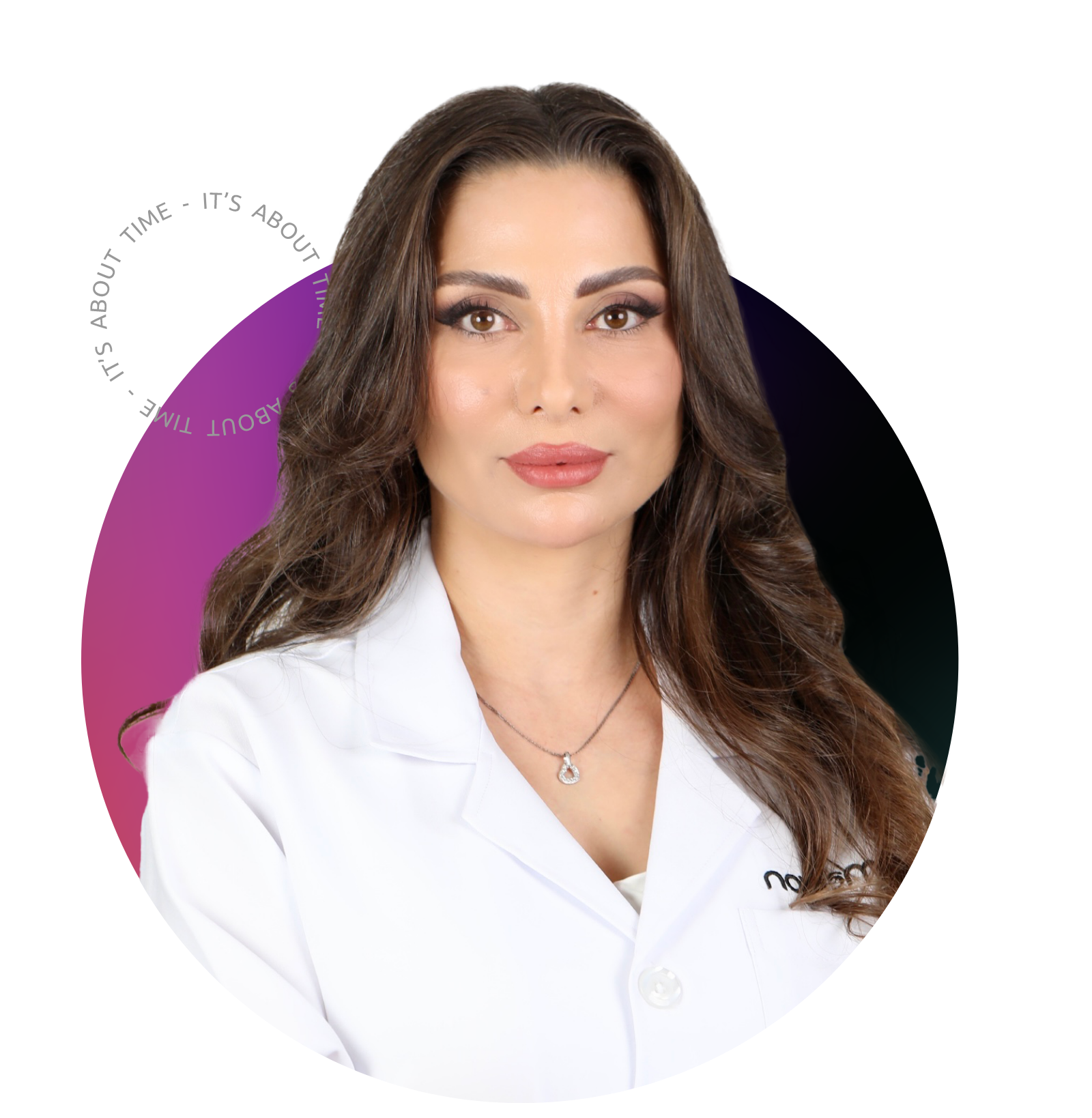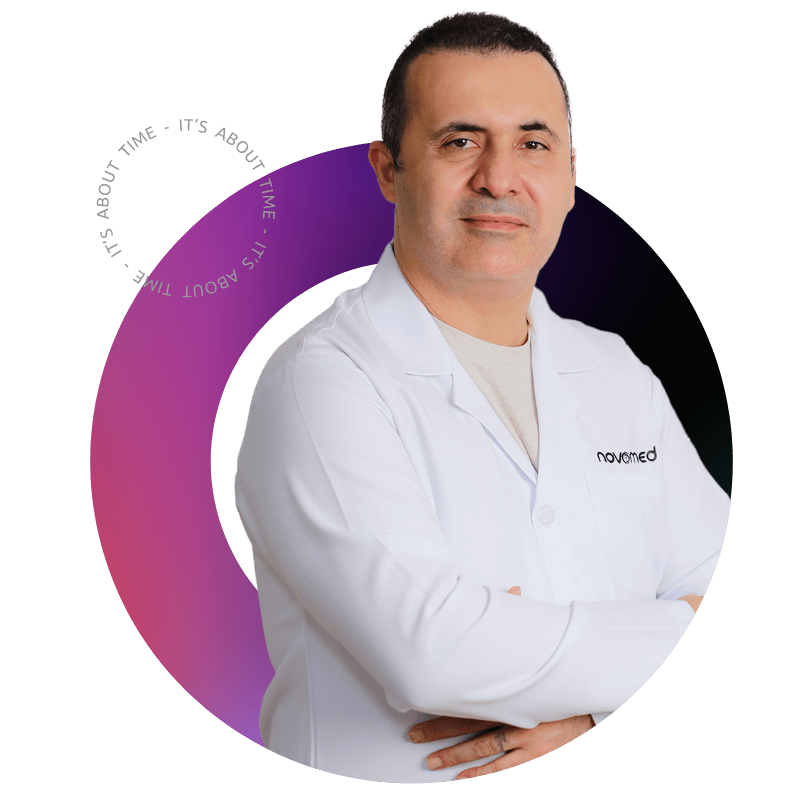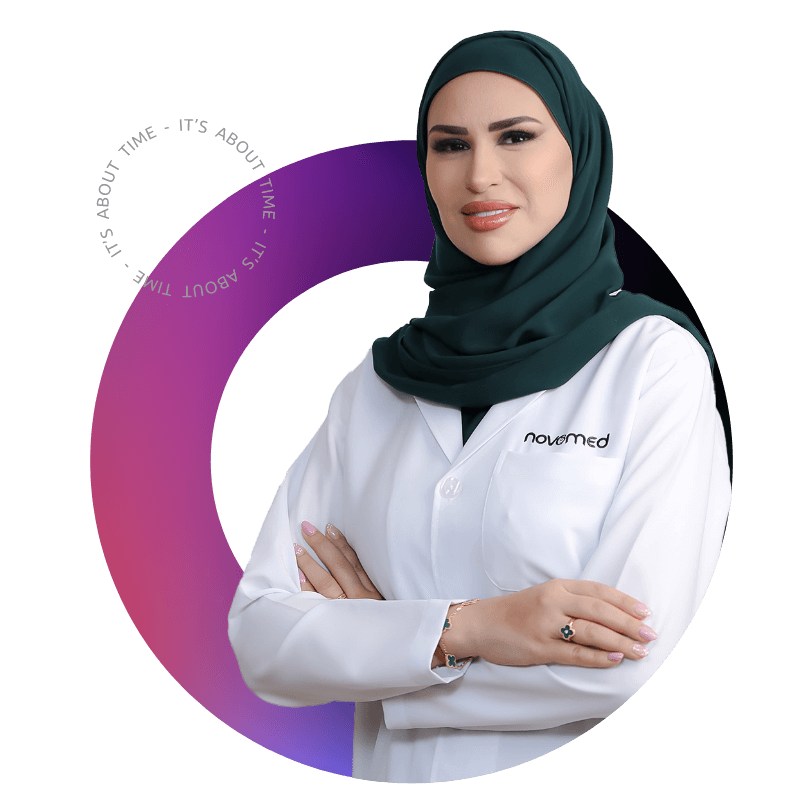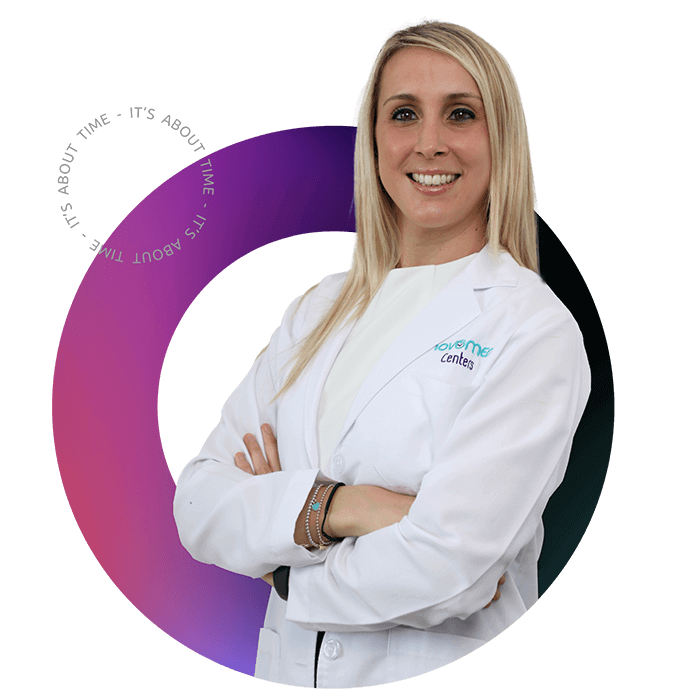A body fat transfer, also known as fat grafting, is a cosmetic procedure that involves transferring excess fat from areas such as the stomach, outer thighs, or hips and injecting it into areas that lacks volume, such as the hands, breasts, thighs, or buttocks. Many patients opt for this minimally invasive procedure at Novomed to improve their body contour and enjoy natural-looking results without downtime or complications.
What are the benefits of fat transfer?
- Reduces unwanted fat in donor areas
- Rejuvenates the hands, lips, and face
- Adds volume to the breast, thighs, calves, or buttocks
- Offers a natural alternative to dermal fillers and reduces the chance of allergic reactions to foreign substances
- Provides natural, longer-lasting results
Am I a suitable candidate for this procedure?
During your consultation with our plastic surgeon, they will review your medical history and discuss your cosmetic goals to ensure that fat transfer is the right option for you. In general, you should meet the following criteria to be a good candidate for fat transfer:
- You should be in good general health.
- You shouldn’t smoke, as smoking increases the risk of complications during and after surgery and slows down the healing process.
- You may need more than one session to achieve your desired augmentation result.
- Your recovery time will vary depending on the amount of fat removed and the number of liposuction sites.
How is a fat transfer performed?
Your surgeon will extract fat from one or multiple parts of your body, purify it and then reinject it into the areas that need augmentation.
- Harvesting
After determining the donor area, your surgeon will inject it with a local anesthetic and use a sterile cannula connected to a syringe to extract excess fat.
- Purification
After collecting a sufficient amount of fat from the donor area, the doctor will use a special centrifuge to purify and then puts the processed fat into syringes that they will use to augment and contour the receiving area.
- Placement
After numbing and cleaning the receiving area, your surgeon will make a small incision to insert a cannula and inject the fat carefully into natural tissue planes to achieve the desired result. Once done, the surgeon may place a compressing garment over the grafted area to reduce swelling and support recovery.
What are the most common areas for fat transfer?
- Breasts
Fat transfer to the breast is an ideal option for patients who wants to add a little boost to their breast size and achieve a more lifted look without using implants. However, if you have poor skin, sagging breasts, want a significant increase in breast size, or don’t have sufficient fat to transfer, breast augmentation with fat transfer is not for you.
- Buttocks
The butt is the most popular spot where women get a fat transfer using a procedure called Brazilian butt lift. In this procedure, the surgeon injects fat to improve the volume and create a lifted, more rounded appearance.
- Abdomen
Men usually opt for fat transfer to help them achieve the sculpted six-pack look. During this procedure, the surgeon extracts fat strategically from the abdomen to define and highlight the muscles and then reinjects the extracted fat back into the abdomen to plump muscle edges, giving them a more pronounced look.
- Arms
Another cosmetic procedure men prefer is augmenting the triceps and biceps through fat grafting to help create a more muscular appearance for patients who can’t achieve it through diet and exercise alone.
- Hands
Fat transfer to the hands helps restore a youthful, plumper look to thinning or wrinkled skin. This procedure can also improve veiny skin and make protruding veins less noticeable.
- Calves
Calves augmentation using fat grafting adds volume to your calves to improve their proportion and symmetry and provides natural-looking results.
What can I expect before the procedure?
During the consultation, your plastic surgeon will discuss your cosmetic needs and goals, review your medical history, examine the donor areas and receiving areas for fat transfer, and answer any questions you may have before your surgery.
Once the surgeon decides that the procedure is suitable for you, they will provide you with detailed preoperative instructions to follow to avoid complications.
Your surgeon will give you an estimate for how long your surgery will last depending on the treatment area and the amount of fat that needs to be extracted and reinjected.
Fat transfer is performed as an outpatient procedure. We recommend that you arrange for a friend or family member to drive you home and stay with you for 24 hours after surgery.
What can I expect during the procedure?
Fat transfer is performed under local anesthesia combined with intravenous sedation, and the surgical team will monitor your heart, blood pressure, pulse, and oxygen levels throughout the procedure.
During the procedure, the surgeon may combine various fat grafting techniques to ensure the best result. Once finished, the surgeon may insert drainage tubes to remove excess fluid and wrap the treatment area with compressing garment to reduce swelling. You can return home after you recover fully from the anesthetic.
How long does take to recover after body fat transfer?
Your plastic surgeon will tell you when you will be able to resume your routine activities and return to work. Moreover, they will give you detailed postoperative care instructions to ensure a smooth recovery.
Recovery time may vary from patient to patient depending on several factors, including the patient’s age and overall health, the amount of fat transferred, and the number of liposuction incision sites.
When can I see the result of the fat transfer?
The receiving area should appear softer and fuller right after surgery; however, the final result can take several months to become evident.
The quality and longevity of your results depend on several factors, including your surgeon’s skills, fat harvesting, and purifying techniques, and the receiving area. In general, fat transfer results tend to be permanent or long-lasting.
How much does body fat transfer cost?
Fat transfer costs vary depending on the body area being treated, the fat grafting technique, how much fat is removed, and the number of liposuction sites. Your surgeon will discuss all this with you in detail during your consultation.
Book your appointment at Novomed Today!
To learn more about fat grafting or book an appointment with one of our top plastic surgeons, call us toll-free at 8006686, fill out the booking form, or click the live chat icon at the bottom of the screen.





























